Search results for: 'bronze'
-
 Zwei antike Bronzebeschläge
Zwei antike BronzebeschlägePaar römische Beschläge, möglicherweise für eine Truhe. Beide mit aufwendigem Dekor, Reste einer Kette bzw. kunstvolles Relief. Museal erhaltene Bronzeartefakte.
Price: on request Pfeilspitze mit Widerhaken aus der Bronzezeit
Pfeilspitze mit Widerhaken aus der BronzezeitDie zwei Flügel sind dornartig zu Widerhaken nach unten gezogen. Großartiges Belegstück für eine Pfeilspitze aus der späten Bronzezeit mit Ähnlichkeit zu neolithischen Exemplaren aus Flint.
Price: on request Bronzezeitliches Tüllenbeil
Bronzezeitliches TüllenbeilBeilkopf aus der späten Bronzezeit Europas in hervorragender Erhaltung. Satt-grüne Patina. 1000 v. Chr. bis 800 v. Chr.
Price: on request Antike Bronzefibel mit P-förmigem Profil
Antike Bronzefibel mit P-förmigem ProfilFibelbogen schön verziert. Nadel intakt. 3. Jh. v. Chr. - 4. Jh. n. Chr. Latene-Zeit bis römische Zeit. Fund aus Region der Limeskastelle Pförring, Eining, Pfünz, Kösching und Weißenburg.
Price: on request Celtic rider figurine
Celtic rider figurineMassive, very well preserved bronze with impressive details.
Price: on request Neck ring of the Urnfield culture
Neck ring of the Urnfield cultureThis bronze ring is an early variant of a torc. The piece of jewellery was found in Southern Germany and dates to the Late Bronze Age.
Price: on request Large decorated violin bow fibula
Large decorated violin bow fibulaImpressive piece of jewellery because of its size and decoration. From Central Europe, made during Late Bronze Age or Early Iron Age.
Price: on request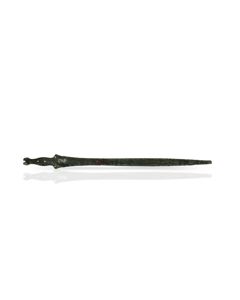 Sword from the Hallstatt period
Sword from the Hallstatt periodImpressive bronze weapon from the Early Iron Age around 700 BC. Made in the region of today's Germany or surrounding countries.
€4,550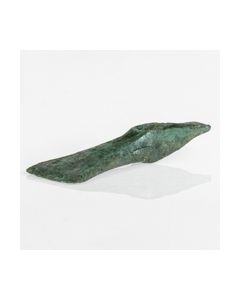 Palstave axehead with decoration
Palstave axehead with decorationExtremely well preserved piece from a Bronze Age hoard found in Manston, UK. 1400 to 1150 BC.
Price: on request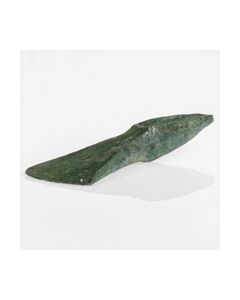 Palstave axehead with decoration
Palstave axehead with decorationExtremely well preserved piece from a Bronze Age hoard found in Manston, UK. 1400 to 1150 BC.
Price: on request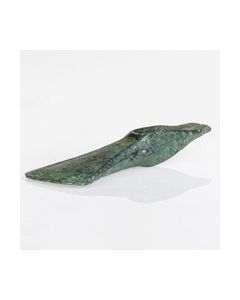 Palstave axehead with decoration
Palstave axehead with decorationExtremely well preserved piece from a Bronze Age hoard found in Manston, UK. 1400 to 1150 BC.
Price: on request Palstave axehead with decoration
Palstave axehead with decorationExtremely well preserved piece from a Bronze Age hoard found in Manston, UK. 1400 to 1150 BC.
Price: on request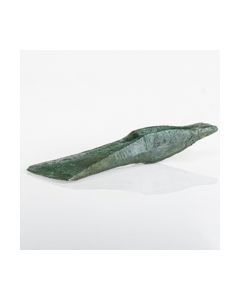 Palstave axehead with decoration
Palstave axehead with decorationExtremely well preserved piece from a Bronze Age hoard found in Manston, UK. 1400 to 1150 BC.
€720 Palstave axehead with decoration
Palstave axehead with decorationExtremely well preserved piece from a Bronze Age hoard found in Manston, UK. 1400 to 1150 BC.
Price: on request Palstave axehead with triangle decoration
Palstave axehead with triangle decorationExtremely well preserved piece from a Bronze Age hoard found in Manston, UK. 1400 to 1150 BC. This axe belongs to a very rare type.
Price: on request Palstave axehead with triangle decoration
Palstave axehead with triangle decorationExtremely well preserved piece from a Bronze Age hoard found in Manston, UK. 1400 to 1150 BC. This axe belongs to a very rare type.
Price: on request Neolithic flint dagger from Denmark
Neolithic flint dagger from DenmarkDouble-edged blade and flat shaft made of beautiful flintstone. A status symbol from the transitional period between Late Neolithic and Early Bronze Age.
Price: on request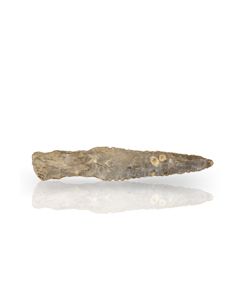 Neolithic flint dagger from Denmark
Neolithic flint dagger from DenmarkDouble-edged blade and flat shaft made of beautiful flintstone. A status symbol from the transitional period between Late Neolithic and Early Bronze Age.
€650 Neolithic flint dagger from Denmark
Neolithic flint dagger from DenmarkDouble-edged blade and flat shaft made of beautiful flintstone. A status symbol from the transitional period between Late Neolithic and Early Bronze Age.
€480 Neolithic sickle from Northern Germany
Neolithic sickle from Northern GermanyCrescent-shaped blade made of beautiful grey flint. This tool represents an intermediate state within the radical transition from Neolithic to Bronze Age.
Price: on request Neolithic sickle from Denmark
Neolithic sickle from DenmarkCrescent-shaped blade made of beautiful brown flint. This tool represents an intermediate state within the radical transition from Neolithic to Bronze Age.
€700 Neolithic flint sickle from Denmark
Neolithic flint sickle from DenmarkCrescent-shaped blade made of beautiful brown flintstone. This tool represents an intermediate state within the radical transition from Neolithic to Bronze Age.
€530 Neolithic flint sickle from Denmark
Neolithic flint sickle from DenmarkCrescent-shaped blade made of beautiful reddish-brown flintstone. This tool represents an intermediate state within the radical transition from Neolithic to Bronze Age.
€520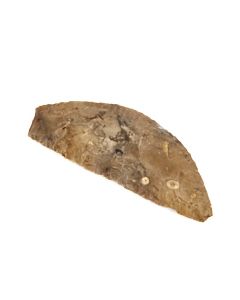 Neolithic sickle from Northern Germany
Neolithic sickle from Northern GermanySmall crescent-shaped blade made of beautiful grey flint. This tool represents an intermediate state within the radical transition from Neolithic to Bronze Age.
Price: on request Neolithic sickle from Northern Germany
Neolithic sickle from Northern GermanySmall crescent-shaped blade made of beautiful polychrome flint. This tool represents an intermediate state within the radical transition from Neolithic to Bronze Age.
Price: on request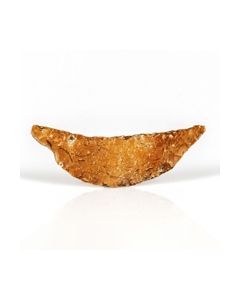 Small Neolithic sickle from Northern Germany
Small Neolithic sickle from Northern GermanyThe crescent-shaped blade is made of reddish brown flint. This tool represents an intermediate state within the radical transition from Neolithic to Bronze Age.
Price: on request Melon bracelet from the Hallstatt period
Melon bracelet from the Hallstatt periodThe massive bronze bracelet was found in Mintraching, Germany. The piece is published in an archeological report. Around 600 BC.
Price: on request Neolithic dagger blade from Denmark
Neolithic dagger blade from DenmarkDouble-edged, pointed blade made of beautiful flint. The blade was for a dagger, the typical status symbol from the transitional period between Late Neolithic and Early Bronze Age.
€480 Neolithic dagger blade from Denmark
Neolithic dagger blade from DenmarkDouble-edged, pointed blade made of beautiful flint. The blade was for a dagger, the typical status symbol from the transitional period between Late Neolithic and Early Bronze Age.
€470 Viking stirrup mount
Viking stirrup mountOpenwork bronze plate from the 11th century. It was once attached to a horse harness strap. The beautiful decorations are typical of the art of the Vikings.
Price: on request Sword of the Urnfield culture from a museum collection
Sword of the Urnfield culture from a museum collectionWonderfully preserved bronze weapon from the time around 1000 BC. It was made in Central Europe by the Urnfield culture and formed part of a museum collection for almost 70 years.
€13,500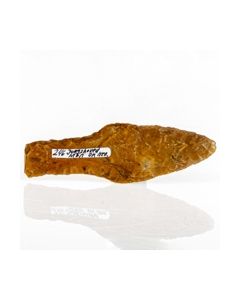 Scandinavian flint dagger
Scandinavian flint daggerNicely worked flint dagger from the transitional period between Late Neolithic and Early Bronze Age. Jungshoved on the Danish Island of Moen was the find spot.
Price: on request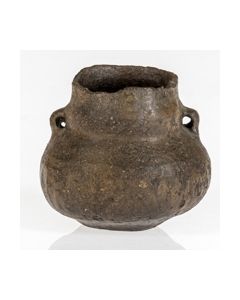 Vessel of the Urnfield culture
Vessel of the Urnfield cultureNicely preserved pottery dating to the Urnfield period, the transition between Bronze Age and Iron Age in Central Europe. Found in Southern Germany. 1200 to 800 BC.
Price: on request Beaker of the Urnfield culture
Beaker of the Urnfield culturePottery vessel with fantastic decoration dating to the Urnfield period, the transition between Bronze Age and Iron Age in Central Europe. Found in Southern Germany. 1200 to 800 BC.
€600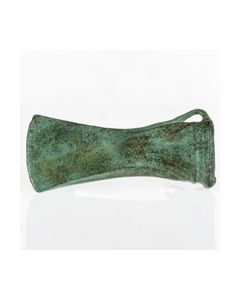 Socketed axe head from Southern Germany
Socketed axe head from Southern GermanyA typical bronze tool of the late Urnfield culture or early Hallstatt culture. It was found near Regensburg in Southern Germany by a voluntary archaeologist.
Price: on request Roman fibula in the shape of a rabbit
Roman fibula in the shape of a rabbitNice zoomorphic roman fibula made of bronze with enamel inlays depicting the young of the rabbit. Found near the Limes fortifications Pfoerring and Eining in Germany.
Price: on request

